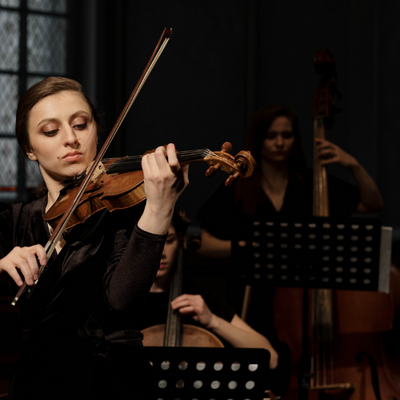If you're seeking a bow of a certain quality for your string instruments, what essentials should you look out for?
No matter where you are in your journey, choosing the right bow is as critical as finding the right violin, viola, cello or double bass. The bow is the key to unlocking your best sound and performance as a musician and acts as an extension of your arm.
Choosing a bow for your string instrument is a personal choice, and with plenty of options out there, can be a tough one to make. Read on to find our tips and checklist to help you in choosing the right bow for you.
Why does the right bow matter?
Finding the right instrument is half the challenge—the bow is the key to unlocking your sound and performance.
The right bow can affect the tone, power, and speed of sound production, as well as improve accuracy and intonation. Different types of bows are designed to suit different instruments and playing styles, so it is important to take into account the characteristics of the instrument when selecting a bow. Different materials and weights can also have an effect on the sound produced by a bow.
This can mean the difference between a beautiful, flowing piece and a shabby, lazy performance. A string instrument player has to have the proper bow height and tension in order to produce the most sound from their instrument. If they don't have enough tension on the bow, it will be too soft and produce less volume. Too much tension will make it hard for them to play quickly and effortlessly.

Before You Choose a Bow…
There are some things for you to look for and listen for.
Know The Type of Bow You Need
When shopping for a bow for a string instrument, it is important to know the type of bow you need. Different instruments require different bows in order to produce the desired sound. The hair material is generally made from horsehair, while the bow’s material is made from brazilwood, Pernambuco wood, or carbon fibre. Knowing the type of bow you need, and the sound you want to make can help ensure you purchase the right one for your instrument.
Factor in Your Performance Requirements
Bows are categorized according to how much power they produce (light, medium and heavy). For classical musicians, a light bow is generally best suited while for jazz and blues, a medium or heavy bow can be more appropriate.
Consider your Playing Style
Do you want a bow that is easy or challenging to use? Are you more expressive with your bow hand or do you prefer a more subtle sound? A bow that is too light will not give you the power you need to really make your mark on the instrument, while a bow that is too heavy will be difficult to control and cause fatigue.

Determine Your Budget
When selecting a bow for a string instrument, it's important to consider your budget. A good quality bow can range in price from a few hundred to several thousand dollars, so it's important to determine what you are willing and able to spend. Additionally, it's important to factor in the cost of accessories such as rosin and a case, which should be taken into account when setting your budget.
Get the Right Size
When shopping for a bow for a string instrument, it's important to know the right size. Bows come in a variety of sizes and can range from size 1/16th to 4/4. It's important to match the size of the bow with the size of the instrument. For example, a full-size violin will require a 4/4 bow, whereas a 1/32nd bow would be suitable for a smaller instrument. When selecting the right size bow, make sure to consult an expert or try out different sizes in order to find the best fit for your instrument.
Checklist: Choosing the Right Bow for Your String Instruments
When choosing the right bow for your string instruments, it is important to consider a variety of factors. Here’s a checklist of things for you to take note of in helping you decide:
Authenticity: Is the bow and its constituent parts authentic? Are there any certifications of authenticity that may verify its status?Material: Bows are made from different materials that offer a variety of durability, affordability and sound.Flexibility: A good bow has to be stiff yet bendable. Can it maintain tension and stay flexible without additional weight?Price: How much does the bow cost? Does it fall within the budget madeAesthetic: The bow is an essential component of many string instruments, and it can make a significant impact on the aesthetic of the instrument. It is also important that the bow has a good amount of hair. Balance: Does the bow have an even distribution of weight that makes it a smooth experience?Ease of playing: The sound of an instrument results from the bow. Ensure that it feels comfortable in your hand before you make a purchase. Overall Sound and Performance: Utilizing a properly crafted bow can greatly improve the overall performance of an instrument, as the right bow can help produce a greater range of dynamics.
<Download the checklist here for your use>

Ready to Buy a Bow for Your String Instrument?
Buying a bow for a string instrument is an important decision to make. It is essential to find the right balance of quality and price, as well as compatibility with the instrument. With so many brands and types of bows available, it can be difficult to determine which one is best for you. It is important to consider factors such as the type of wood used, the balance, and the flexibility of the bow.
We’ve armed you with the information, now try out some bows and see which one matches your needs. Make an appointment with us today and let our in-house experts help you find the right bow for your string instrument.





















